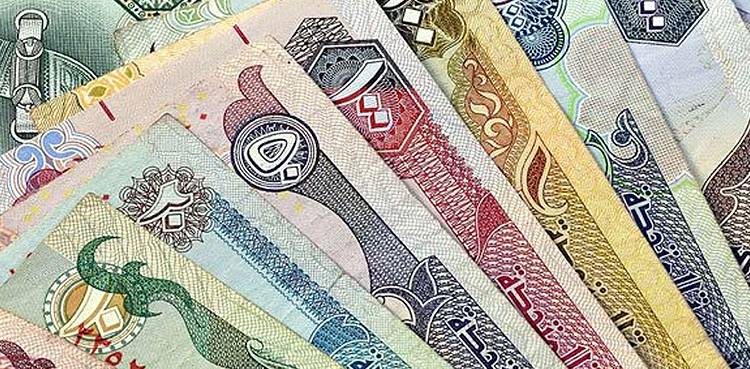KARACHI/DUBAI- July 2, 2025: The UAE Dirham (AED) is trading at 77.25 Pakistani Rupees (PKR) today, showing a marginal decline from yesterday’s rate of 77.26 PKR, maintaining its position near the monthly peak following a strong June performance.
Despite today’s minor retreat, the dirham remains close to its month-end high, reflecting the underlying strength that characterized its June trajectory against the Pakistani currency.
1 UAE Dirham= 77.25 Pakistani Rupee
Strong Monthly Performance Despite Minor Pullback
The current rate represents the culmination of a robust monthly performance for the UAE Dirham. Throughout June, the AED demonstrated consistent strength, gaining 0.81 PKR over the month. The currency climbed steadily from 76.44 PKR at the start of June to reach 77.25 PKR by month’s end, marking a solid appreciation of approximately 1.06%.
This upward movement showcases the dirham’s resilience in regional currency markets, with today’s minimal decline doing little to diminish the overall positive momentum established during the previous month.
UAE’s Economic Strength
The UAE Dirham’s resilience stems from the UAE’s position as a global financial powerhouse and its diversified economic base. Unlike many regional economies heavily dependent on oil, the UAE has successfully diversified into finance, tourism, logistics, and technology sectors, creating multiple revenue streams that support currency stability.
The UAE’s robust economic policies, including prudent fiscal management and strategic investments in infrastructure and innovation, have established Dubai and Abu Dhabi as major international business hubs, generating substantial foreign currency inflows.
Currency Valuation Dynamics
The AED-PKR exchange rate is influenced by several key factors, including trade volumes between the two nations, foreign investment flows, and relative economic performance. The UAE’s status as a major re-export hub and its strong banking sector create consistent demand for dirhams from international businesses and investors.
The UAE Central Bank’s monetary policy, which maintains the dirham’s peg to the US dollar at 3.6725 AED per USD, provides stability and predictability for currency markets. This peg, combined with the UAE’s substantial foreign reserves, ensures exchange rate stability against major currencies.
Currency Profiles
The UAE Dirham, introduced in 1973, replaced multiple currencies previously used across the emirates. Pegged to the US dollar since 1997, the dirham benefits from the stability of this arrangement while reflecting the UAE’s economic strength. The currency’s stability has made it a preferred medium for regional trade and investment.
The Pakistani Rupee, established as Pakistan’s currency in 1948, operates under a managed float system overseen by the State Bank of Pakistan. The rupee’s value fluctuates based on economic fundamentals, including trade balances, foreign investment, and domestic monetary policy decisions.
Economic and Social Impact
The UAE Dirham’s strength significantly impacts the substantial Pakistani diaspora in the UAE, estimated at over 1.5 million people. A stronger AED-PKR rate enhances the value of remittances sent home, providing increased purchasing power for families in Pakistan and contributing to the country’s foreign exchange reserves.
For bilateral trade, the stronger dirham makes UAE imports more expensive for Pakistani businesses while potentially boosting the competitiveness of Pakistani exports in UAE markets. The UAE remains one of Pakistan’s largest trading partners, making exchange rate movements particularly significant for bilateral commerce.
DOLLAR RATE TODAY IN PAKISTAN- LIVE
Market Outlook
The UAE Dirham’s June performance and current stability near monthly highs suggest underlying economic fundamentals remain supportive. The UAE’s continued economic diversification, strategic location as a regional hub, and sound fiscal policies are likely to maintain the currency’s strength relative to regional peers.
Market observers expect the AED to remain resilient, supported by the UAE’s position as a gateway between East and West and its ongoing investments in future-oriented sectors including renewable energy and digital innovation.


Leave a Comment